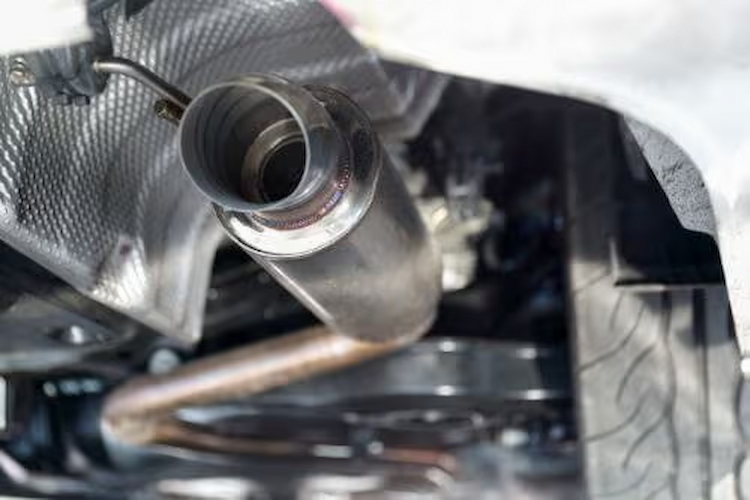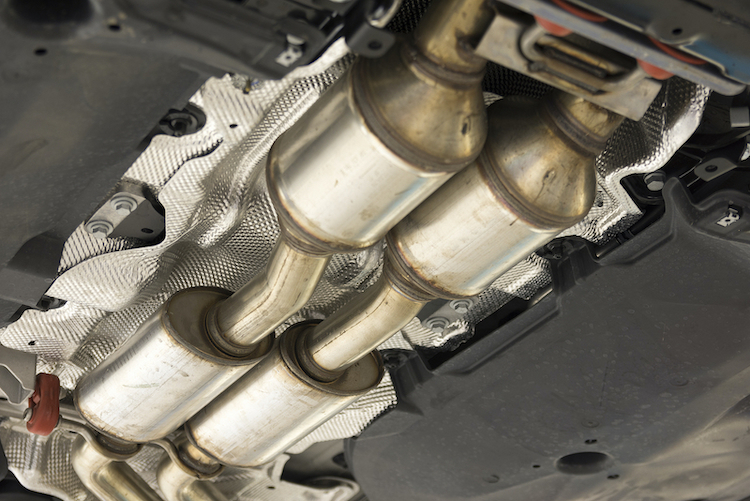In the realm of automotive engineering, the exhaust system plays a pivotal role in the vehicle’s overall performance, efficiency, and safety. One often overlooked yet essential component of this system is the exhaust heat shields. This vital piece of equipment ensures that the excessive heat generated by the exhaust system does not compromise the vehicle’s performance or safety. Understanding the importance, functionality, and advancements in exhaust heat shields can offer significant insights for automotive enthusiasts and professionals alike.
Understanding Exhaust Heat Shield Sheets

source: secondskinaudio.com
An exhaust heat shield sheet is a specially designed barrier that protects various components of a vehicle from the intense heat generated by the exhaust system. Typically made from materials with high thermal resistance, such as aluminum or stainless steel, these sheets are engineered to reflect, dissipate, or absorb heat. This prevents the heat from damaging nearby components, such as the car’s bodywork, fuel lines, electrical wiring, and other sensitive parts.
Importance of Exhaust Heat Shield Sheets
The primary function of an exhaust heat shield is to ensure thermal management within the vehicle. Excessive heat from the exhaust can lead to several issues, including:
- Component Damage: Prolonged exposure to high temperatures can cause significant damage to nearby components, leading to costly repairs or replacements.
- Reduced Performance: Heat can negatively impact the performance of the engine and other critical systems, reducing the overall efficiency of the vehicle.
- Safety Hazards: Excessive heat can pose safety risks, including the potential for fires or burns, making effective heat management crucial.
Advances in Heat Shield Technology
The evolution of exhaust heat shields has seen significant advancements over the years. Modern heat shield sheets are designed using advanced materials and manufacturing techniques to enhance their effectiveness. Innovations in this field include:
- Multi-layer Construction: Contemporary heat shields often feature multi-layer construction, combining different materials to maximize heat resistance and durability. For example, a combination of aluminum and ceramic layers can provide superior thermal insulation.
- Lightweight Materials: Advances in material science have led to the development of lightweight heat shield sheets that do not add significant weight to the vehicle, thus maintaining its performance and fuel efficiency.
- Flexible and Formable Designs: Modern heat shield sheets are designed to be flexible and easily formable, allowing them to be custom-fitted to various parts of the vehicle. This flexibility ensures optimal coverage and protection.
- Enhanced Aesthetic Appeal: With growing consumer awareness, manufacturers are now focusing on the aesthetic appeal of heat shield sheets, offering designs that blend seamlessly with the vehicle’s overall look.
Applications of Exhaust Heat Shield Sheets

source: secondskinaudio.com
Exhaust heat shields are used in various applications across different types of vehicles, including:
- Passenger Vehicles: In passenger cars, heat shield sheets protect the cabin from excessive heat, ensuring passenger comfort and safety.
- Performance and Racing Cars: High-performance and racing cars generate more heat due to their powerful engines. Heat shield sheets play a critical role in managing this heat to maintain performance and prevent damage.
- Commercial and Heavy-Duty Vehicles: In trucks and heavy-duty vehicles, heat shield sheets protect critical components from heat damage, ensuring reliable operation under demanding conditions.
- Motorcycles: Motorcycles, with their exposed exhaust systems, benefit significantly from heat shield sheets that protect the rider and nearby components from heat.
Choosing the Right Exhaust Heat Shield Sheet
Selecting the appropriate exhaust heat shields for your vehicle involves considering several factors:
- Material: The choice of material is crucial, with options like aluminum, stainless steel, and composites offering different levels of heat resistance and durability.
- Thickness: The thickness of the heat shield sheet impacts its effectiveness. Thicker sheets provide better insulation but may add more weight.
- Installation: Some heat shield sheets are easier to install than others. Consider whether professional installation is required or if a DIY approach is feasible.
- Customization: Custom-fitted heat shield sheets offer better coverage and protection, especially for high-performance or unique vehicle designs.
Conclusion
In the intricate world of automotive engineering, the exhaust heat shields stand as a testament to the importance of thermal management. As vehicles continue to evolve, with increasing demands for performance, efficiency, and safety, the role of heat shield sheets becomes ever more critical. By understanding the advancements and applications of these essential components, automotive enthusiasts and professionals can ensure that their vehicles operate at peak performance while maintaining safety and durability.
Whether you’re driving a high-performance sports car, a reliable family sedan, or a powerful commercial truck, the exhaust heat shields play a silent yet vital role in your vehicle’s journey. As technology continues to advance, we can expect even more innovative solutions in heat management, further enhancing the driving experience for all.

